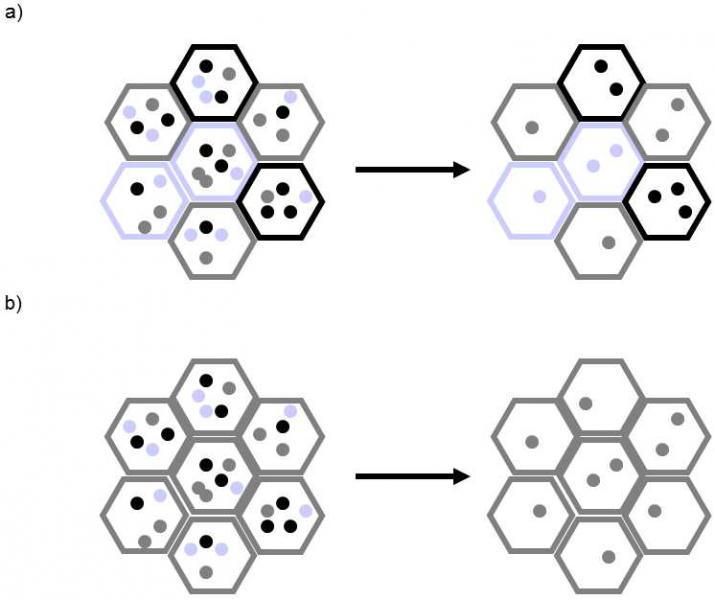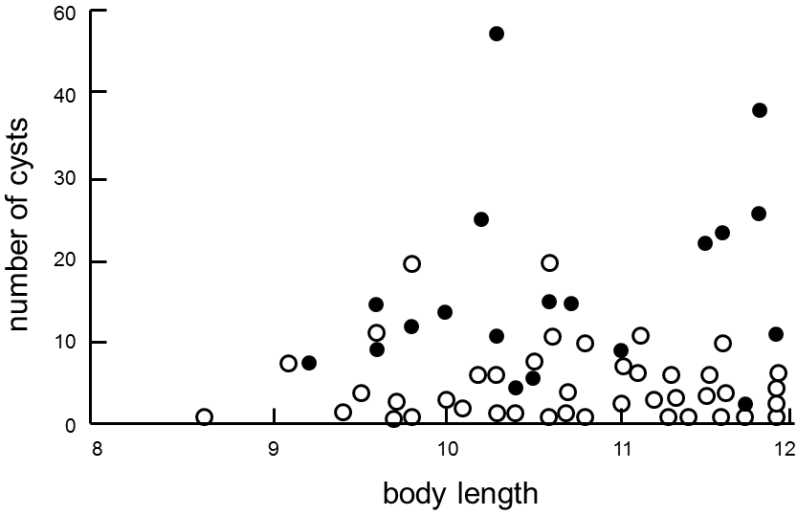XIII.3.2.2.1 The elbow room hypothesis assumes that polymorphism in offspring limits sibling competition
The elbow room hypothesis assumes that polymorphism of offspring, which is renewed in every generation because of sexual reproduction, reduces competition amongst siblings.The fact that the offspring of common parents differ in a great many traits means that they have somewhat different ecological, for example food, requirements.Thus, they do not compete together as much as the identical progeny of an asexually reproducing organism.

Fig. XIII.9 The lottery model. The model assumes that, at the beginning of the season, all the habitats in a heterogeneous environment are occupied by a large number of offspring of a certain species (a). However, after some time, only those individuals whose genotype and thus phenotype best correspond to the conditions at the particular habitat survive. If the species were to reproduce asexually, and were thus to produce genetically uniform progeny, it would be able to ideally adapt to the conditions of the commonest type of habitat. However, in all the other habitats, it would lose out in competition with the genetically more diverse progeny of a sexually reproducing species, amongst which an individual would exist that would be better adapted to the particular type of habitat than all the others. If an asexual species were adapted to an average habitat, it could even lose out in competition with a sexual species in all types of habitat. If the environment were to have completely homogeneous conditions (b), then an asexual species would be at an advantage if it were specialized for the given type of environment and would not generate suboptimal genotypes by segregation and recombination

Fig. XIII.10 Intensity of infection by fluke worm larvae in parthenogenetic and sexually reproducing ginbuna crucian carp . The graph enables comparison of the number of cysts of fluke worm larvae (metacercariae) in the fins of triploid gynogenetic (black points) and diploid sexually reproducing (white points) females of ginbuna crucian carp (Carassius auratus), caught in Lake Suwa (Japan). The numbers of cysts are significantly higher for gynogenetic females. There was no significant correlation between the length of the fish and the number of cysts. According to Hakoyama (2001).
